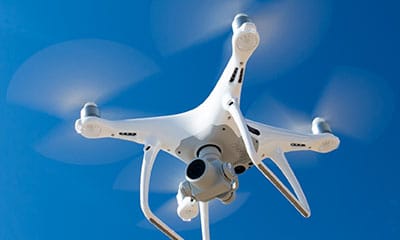How Fully Reusable Rockets Are Transforming Spaceflight
Reusable rockets are poised to transform the space industry by bringing about profound, game-changing benefits in cost efficiency, sustainability and technological advancement. By significantly reducing the cost of transportation to space, these innovations could make space more accessible than ever before and enable a new era of commercial and scientific exploration.

Unlocking the Final Frontier
Imagine a world where every aircraft, after completing a single flight, was scrapped and replaced with a brand-new one. Air travel would be a luxury reserved for the ultra-wealthy, with ticket prices skyrocketing to cover the immense costs of disposable aircraft.
Now, shift this analogy to space exploration. For decades, launching rockets was akin to this hypothetical aviation model. Traditional rockets are used once and then discarded, often falling into the ocean, burning up in the atmosphere, or being thrown out into space.
Each mission required an entirely new vehicle, and the astronomical costs confined space exploration to well-funded governments pursuing scientific discoveries or military objectives and major satellite operators seeking to profit in connecting the world. This exclusivity turned the final frontier into a realm accessible only to elite players with deep pockets, stifling broader innovation and exploration.
The advent of reusable rockets has revolutionised this paradigm, transforming spaceflight from an exclusive, exorbitant endeavour into a more accessible and economically viable one.
Just as commercial aviation became a cornerstone of global connectivity, reusable rockets will unlock new opportunities for commercial space activities, scientific research and even human space travel.
The Revolution of Reusable Rockets
Fully reusable rockets are designed to be launched, recovered, refurbished and relaunched multiple times. Rockets typically consist of stages that separate during the ascent phase. While traditional rockets discard these stages after use, reusable rockets employ advanced technologies such as flight control surfaces, heat shields, thrust vector control and sophisticated flight software to guide and land them safely back on Earth.
After recovery, the components undergo inspection and refurbishment to ensure readiness for the next launch. By reusing the same hardware instead of building new rockets for each mission, this approach maximises efficiency, minimises waste and boosts launch frequencies.
The ability to inspect launch hardware and more effectively analyse flight data after each mission enables continuous, iterative improvements to reusable rocket systems.
Again, drawing a parallel to other modes of transportation, motor vehicles and air travel were initially accessible only to the wealthy. Over time, advancements in technology, materials, manufacturing techniques and infrastructure have reduced costs, improved safety and made them widely available. Space transport is now following a similar trajectory.
While the concept of reusable space systems isn’t new—the Space Shuttle was designed with reusability in mind—creating a fully and rapidly reusable launch system at affordable pricing was long considered unattainable due to technological limitations. Today, those barriers are being overcome, paving the way for a new era in space exploration.
Rapid Advances by Key Players
The rise in industry privatisation led to several companies taking the lead in reusable launcher development.
SpaceX has led the way with the Falcon 9, a partially reusable rocket that has achieved hundreds of successful landings and reuses. Building on this success, the company is advancing toward a fully reusable system with Starship, which is designed for missions to the Moon, Mars and beyond.
On October 13, 2024, Starship hit a major development milestone when both the spacecraft and its booster, the Super Heavy Booster, successfully returned to Earth. In a world-first, the booster executed a “chopstick catch,” manoeuvring back to its launch tower and being caught by massive mechanical arms.
This innovation represents a significant step forward in SpaceX’s goal of developing a rapid-reuse rocket system. Landing directly at the launch site eliminates the need for transportation back to the pad, streamlining operations. SpaceX envisions a future where boosters can be inspected, refuelled and prepared for their next mission from the same pad within hours.
Other advances occurring in spaceflight include:
- Blue Origin’s New Shepard rocket has completed multiple suborbital flights and landings for space tourism, and it is developing the New Glenn rocket for orbital missions. The New Glenn is set for its maiden flight before 2025.
- Rocket Lab is making its Electron rocket partially reusable and is developing the fully reusable Neutron Rocket.
- The European Space Agency (ESA) is working with companies like Rocket Factory Augsburg, The Exploration Company, ArianeGroup and Isar Aerospace to develop reusable rocket technology.
- Virgin Galactic’s SpaceShipTwo is designed for suborbital space tourism, offering passengers a unique space travel experience.
Other notable organisations like ISRO and Arianespace are also exploring reusable rocket technologies.
Impact on the Space Industry
Ongoing innovation in reusable rocket technology will have wide-ranging effects in many areas.
Economics:
Already, the introduction of partially reusable rockets has had a transformative impact on the economics of access to space, significantly reducing the cost per kilogram to Low Earth Orbit (LEO). SpaceX, for example, has been able to drive down the cost of a Falcon 9 launch, with prices as low as USD62 million per launch, or USD2,700 to 3,000 per kilogram to LEO. This is much cheaper than traditional expendable rockets, which could charge upwards of USD10,000 per kilogram. Looking ahead, fully reusable systems, when operational, could lower this even further, potentially bringing the cost to under USD100 per kilogram.
This profound reduction in costs, on the order of a hundredfold, will mean space is open for a host of new commercial and scientific ventures. By making space more affordable, it enables smaller players and new entrants to compete, fostering a more dynamic and innovative market. This increased competition not only drives technological advancement but also helps extend the benefits of space exploration back to Earth, from improved communication networks to in-space manufacturing and mining to advancements in climate monitoring and disaster response.
Sustainability:
Reusable rockets offer significant potential for reducing pollution and environmental impact compared to traditional expendable launch vehicles. Reusing rocket components requires fewer resources for each launch, reducing the environmental footprint associated with raw material extraction, processing and manufacturing.
Reusable rockets also minimise the amount of discarded hardware in Earth’s orbit and oceans.
Traditional expendable rockets often leave stages and components as space junk or ocean waste. In contrast, reusable systems return these parts to Earth for refurbishment and reuse.
However, the amount of space debris indirectly caused by affordable access to space is contributing to a growing problem. In 2019, fewer than 3,000 satellites orbited Earth, but by 2024, this number had swelled to over 10,000, driven largely by mega-constellations. This surge in satellite deployment has compounded the risks posed by space debris, with over 34,000 pieces larger than 10 cm currently tracked and many more small fragments that are harder to monitor. The rise of reusable rockets could exacerbate this issue.
While reusability offers significant benefits in cost reduction and efficiency, it also means more frequent launches and potentially more risk of generating debris. With the increasing number of objects in orbit, even minor collisions could escalate into a significant debris cloud, creating a cycle that is difficult to stop. This process could lead to an uncontrollable and dangerous increase in space debris, potentially rendering certain orbits unusable for satellites or space exploration. Consequently, the issue of space debris has become a critical concern for the future of satellite operation and space exploration, prompting calls for better debris management and international cooperation to ensure space remains usable for future generations.
Reliability and safety:
The impact of fully reusable rockets on reliability and safety is both promising and complex. Reusability can increase reliability over time as rockets undergo more frequent flights, allowing for consistent monitoring, data analysis and iterative improvements. SpaceX’s Falcon 9, for example, has proven that rockets can be reused multiple times, with the company refining designs after each flight, thus enhancing overall safety.
Repeated flights allow engineers to identify and address minor issues that might not be apparent in the first launch, ultimately leading to more reliable systems.
However, this process is not without challenges. Components such as engines and turbopumps endure significant wear and tear during flights, potentially leading to failures if not properly maintained. Over time, parts might develop cracks or suffer from issues like particle impacts, which could compromise performance and safety. Despite this, ongoing research into materials and coatings aims to mitigate these risks, developing more resilient components for extended lifespans.
As for safety, the very nature of reusing rockets poses risks. While the potential for rapid turnarounds and cost reductions is enormous, the challenge lies in ensuring that rockets are thoroughly inspected, repaired and tested between flights. This could result in a system where safety protocols are more stringent but also more robust as technology and materials continue to improve. Ultimately, with continuous technological advancements and refined protocols, reusable rockets could not only become safer but could redefine the reliability standards for space transport.
The Broader Implications of Reusable Rockets
Advancements in rocket technology, particularly fully reusable rockets, bring significant benefits to various industries. High-performance materials and innovations in 3D printing and automated processes enhance the aviation, automotive, manufacturing and medical sectors.
Rocket propulsion advancements support sustainable energy solutions, while autonomous systems and artificial intelligence (AI) improve navigation and control in autonomous vehicles, industrial automation and robotics. These advancements drive efficiency, sustainability and progress across multiple sectors.
Additionally, affordable access to space enables more countries to participate in space missions, fostering collaboration and establishing global standards.
The expanding space industry creates economic opportunities by lowering the barriers to entry for businesses, fostering innovation and creating new markets such as space tourism and in-orbit services. This growth benefits global communications, weather forecasting and Earth observation, with potential revolutions in energy and mining industries through space-based solar power and asteroid mining.
Conclusion
The advent of fully reusable rockets marks a transformative era in space exploration and industry. By significantly reducing launch costs and increasing mission frequency, space access becomes democratised, fostering innovation and competition across various sectors. Companies like SpaceX and Blue Origin are leading this revolution, making space more accessible and affordable.
Lower costs and increased launch frequency enable a broader range of participants, from startups to educational institutions, to engage in space activities. This also drives new markets and industries, such as space tourism and in-orbit services, while also offering environmental benefits through reduced waste and sustainable practices.
Beyond the space industry, technological advancements in materials science, precision engineering and autonomous systems benefit aviation, automotive, energy and other sectors. International cooperation is also set to increase, with nations pooling resources and expertise to achieve ambitious space missions and establish global standards for space activities.
Fully reusable rockets are not just a technological innovation but a catalyst for economic growth, international collaboration and sustainable development. As we look to the future, the continued evolution of reusable rocket technology promises to unlock new possibilities for space exploration and beyond, heralding a new era of opportunity and advancement for humanity.
As we embark on this exciting journey, the question remains: How will we harness these advancements to ensure a secure and prosperous future for the space industry and its stakeholders?




